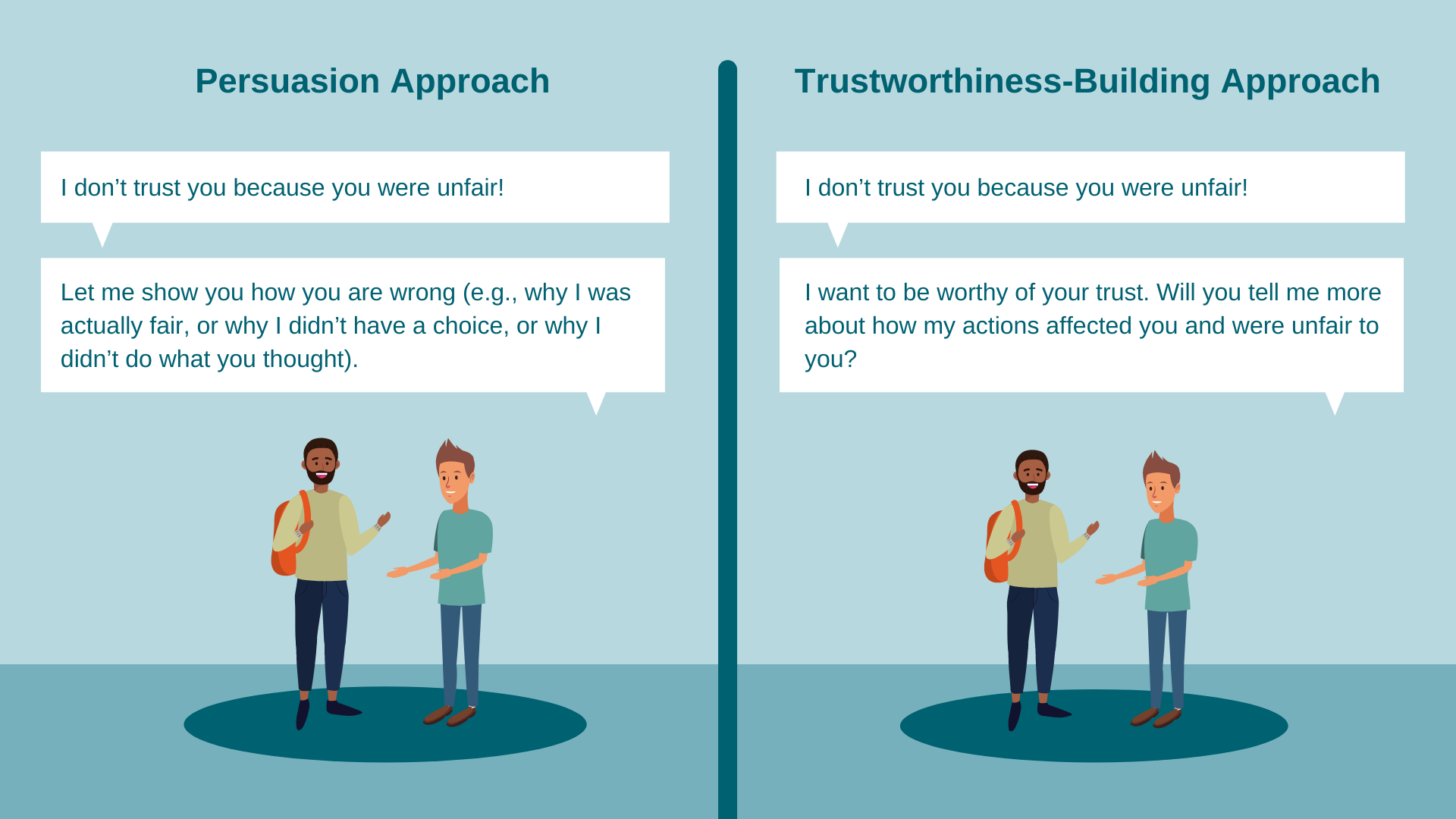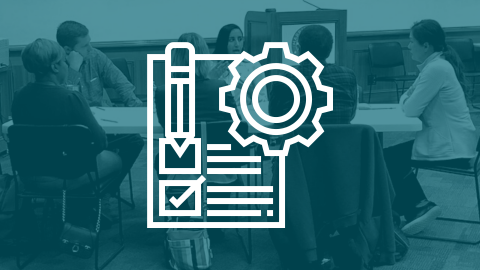How Do You Build Public Trust? Do Unto Others: Trust the Public.
Across the many varied definitions of trust, there are some common themes. First, trust is relational because it always involves both a trustor (the one doing the trusting or distrusting) and a trustee (the one being trusted or distrusted). Second, the relationship that occurs between the trustor and trustee is one involving some level of dependence and risk.1
While trust is often talked about as going from someone to someone else, it almost always goes both ways. For example, it is common to talk about wanting the public to trust the courts. This perspective recognizes the public is dependent upon the courts and experiences vulnerability due to that dependence.
It is less common to think about the trust that the courts have in the public, and even less common to consider the dependence that underpins that relationship. Yet the courts do depend on the public to treat their decisions as valid and to respond to them with cooperation. Thus, the courts may or may not trust the public to behave in a manner that recognizes their authority. Specifically relating to public engagement, members of the court may have different levels of confidence that various populations will respond positively and productively if the court tries to engage them.
"The degree to which the judicial branch can promote the rule of law and protect individual rights is, in large part, determined by the respect of the public for its authority.”
From: Competency: Public Trust and Confidence, NACM CORE
Trust is Reciprocal
While it is common and certainly simpler to look at trust through a unidirectional lens, this perspective is typically incomplete. The idea that trust should be considered bidirectionally is consistent with the observation that “trust begets trust.” That is, people tend to trust people who trust them.2
When people say they do not trust you, it is best to remain curious and non-defensive. That is, initiate trust, by behaving as if you trust their perceptions. Efforts focused on persuading people to change their minds—to believe that you really are trustworthy—can backfire. In fact, trying to persuade someone who distrusts you can lead to reactance (greater distrust) rather than positive changes in attitudes and beliefs.3 In contrast, a focus on clarifying “how can I be more trustworthy?,” “how can I build your trust?” suggests you are willing to take risks in the relationship—that is, you are willing to trust. Some research suggests that, in addition to trust begetting trust, trust can inspire the trusted other to behave with their own trustworthiness and to trust others besides the initiator.4

What If the Public Really IS Untrustworthy?
Of course, it is not wise to completely trust the untrustworthy. Ignoring signals of dis-trustworthiness is not advisable. However, steps toward building reciprocal trust can still be taken if you understand your own or your courts’ distrust of the public. Distrust implies perceptions of unprotected vulnerability. If you can understand and reduce those vulnerabilities to an acceptable level, it may be easier to take small risks and demonstrate trust which then begets trust in return.
Some questions you might ask include:
- In what ways might the public make your or your court’s job harder?
- Are you concerned that the public might be disrespectful to your effort?
- Do you have any security concerns?
- Do you trust the public to collaborate in good faith with you on identified needed reforms?
- What happens to you if the public is not trustworthy?
The questions you might ask will depend on the vulnerabilities you have identified and may include:
- What can you do to increase your/your court’s own willingness to accept vulnerability within engagements with various publics?
- Does your court/court staff need more information about the potential positive effects of public engagement?
- Do you need to find funding so that this additional effort does not become an extra burden?
- Do court judges and staff need extra training so they can feel confident dealing with any controversy that could arise?
Custom-Built Trustworthiness
Once you have a good understanding of and have given attention to your own vulnerabilities, it may be easier to be responsive to those of the public. Then, you can build trust by being willing and making efforts toward “custom building” trustworthiness in light of the needs and actual and perceived vulnerabilities of various trustors.
[1] PytlikZillig, L. M., & Kimbrough, C. D. (2016). Consensus on conceptualizations and definitions of trust: Are we there yet? In E. Shockley, T. M. Neal, L. M. PytlikZillig, & B. H. Bornstein (Eds.), Interdisciplinary perspectives on trust: Towards theoretical and methodological integration (pp. 17-47). Springer. https://doi.org/DOI: 10.13140/RG.2.1.1365.5205
[2] Serva, M. A., Fuller, M. A., & Mayer, R. C. (2005). The reciprocal nature of trust: A longitudinal study of interacting teams. Journal of Organizational Behavior, 26(6), 625-648.
[3] E.g., Song, H., McComas, K. A., & Schuler, K. L. (2018). Source effects on psychological reactance to regulatory policies: The role of trust and similarity. Science Communication, 40(5), 591-620.
[4] Cohen, M. A., & Isaac, M. S. (2021). Trust does beget trustworthiness and also begets trust in others. Social Psychology Quarterly, 84(2), 189-201. https://doi.org/DOI: 10.1177/0190272520965192
